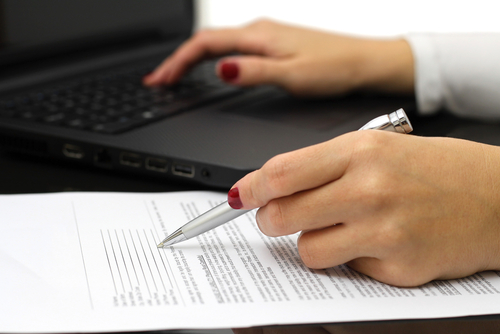Every business must perform employment eligibility verification for new employees—it’s required by law. While all business do this, not all businesses use the government’s Internet-based verification system, E-Verify.
 |
E-Verify was created in 1997 as a pilot program that was available for employers to use across several states. Then, as now, participation was voluntary. Over the years since then, the system has gained in functionality and in participation by employers and has been rolled out across the entire United States. Some states have even partnered with the federal government to allow driver’s license information to be cross-checked as well. In all, more than 20 million verifications have been processed by the system since its inception, and now more than 400,000 employers are enrolled to use it.
How Does E-Verify Work?
E-Verify takes the information input by the employer (garnered from the new employee’s I-9 form) and compares it to information in multiple U.S. databases to determine employment eligibility. It looks at social security records, U.S. Citizenship and Immigration Services (USCIS) records, and data from the Department of Homeland Security as well. The process will also show photos of individuals who have one in the system; this allows another layer of identity confirmation for employers.
After comparing the information, E-Verify provides a response on employment eligibility for the individual. Usually the response is received in just a few seconds. If everything matches up and the employee is eligible to work in the United States, the response will note that employment is authorized. If there is any type of mismatch, the immediate response will be a tentative nonconfirmation, which will then require follow-up action from the employee to resolve the mismatch. In cases where a tentative result is issued, the employee and employer must follow up to get a final result.
Why Use E-Verify?
If the system is purely voluntary and requires training to understand how to use it, you may be wondering why so many employers bother to participate in E-Verify.
One main reason is that it’s mandatory for a few types of employers, such as all federal contractors and vendors. Some states also require specific businesses to use the E-Verify system. For these employers, the rationale is simple—it’s a legal requirement. That said, there are more benefits for employers who opt to use the system voluntarily. According to the USCIS website, here are some of the benefits:
- It provides instant and accurate employment eligibility results. This gives employers peace of mind, knowing that their employees have been verified as eligible for employment.
- There’s no cost for employers to use the system.
- It makes legal compliance simple.
- Employers have the ability to generate reports showing how the system is used in their organization.
- It can be implemented in one location at a time. In other words, it does not have to be implemented en masse in a companywide rollout if you prefer to implement it only at individual locations within the organization.
- The system can be used at any time of day from anywhere with an Internet connection.
- It alerts employees if their records contain information that does not match or if their records indicate they may not be eligible for work.
- There are a lot of online resources available to help organizations set up and understand how to use the E-Verify system. There is also a dedicated customer service line for questions.
Does your organization use E-Verify, or have you been considering it? What are your concerns? What have you found in the course of using the system?
About Bridget Miller:
Bridget Miller is a business consultant with a specialized MBA in International Economics and Management, which provides a unique perspective on business challenges. She’s been working in the corporate world for over 15 years, with experience across multiple diverse departments including HR, sales, marketing, IT, commercial development, and training.
